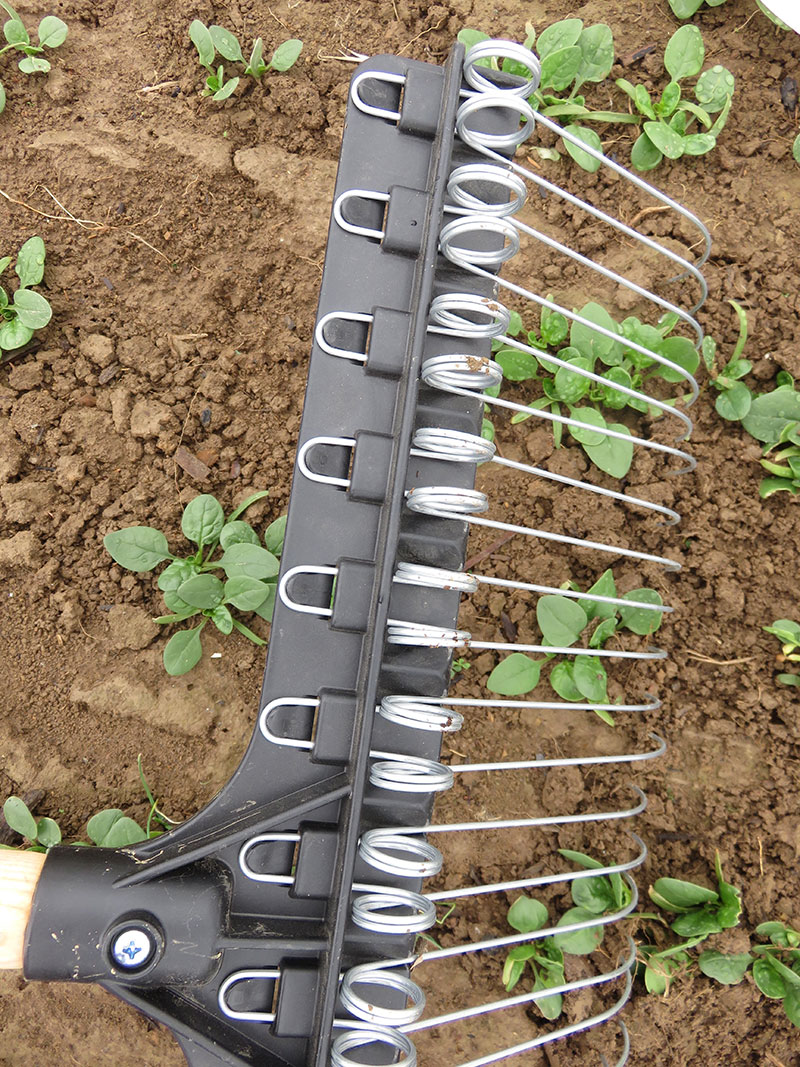
When it comes to making money on your garden, weeds can be a frustrating obstacle. They will bury your carrots, reduce your tomato yields, and ruin your salad mix. Thanks to the dedication of some inventive growers over the years, there are a number of new tools to help combat, prevent and ultimately rid your garden of weeds.
Naturally, all of these tools have to be used in accordance with good practices, but when used at the right times in the right ways, weed pressure will no longer be the issue. The issue will be what to do with all the time you used to spend hand-weeding.
1. Large Black Tarps
Cultivation should really start before planting. In our garden, we like to use large, black plastic tarps laid out over a future plot. These tarps, as described by Jean-Martin Fortier in The Market Gardener, heat up the soil, germinate weeds, and then smother them. They are then pulled off and the garden can be lightly cultivated—preferably not tilled again as to not bring up weed seed—then planted.
Practice: Stretch tarps over prepared soil (already plowed and tilled) for a minimum of two weeks in summer and at least six weeks in the winter. Remove, harrow or lightly hoe the soil, and then plant.
2. Collinear Hoe

No matter how good your preemptive weeding is, it is hard to get around needing a hoe or two if you keep a garden. What sets collinear hoes apart is the long handle and sharp angle of the hoe so that they can be used while standing straight up, taking pressure off the back.
Practice: The collinear hoe should be lightly drug through the soil after a rain or watering once the soil is mostly dry again to break the crust and kill weed seed. First go between plants, then above, then below, working to cover as much surface area as possible. Keep the blade sharp.
3. Stirrup Hoe
The stirrup hoe, much like the collinear hoe, can be used standing straight up. How it works is that the stirrup—usually 3 to 8 inches wide—slides below the surface, literally nipping the weeds in the bud. Generally speaking, these hoes tend to be slightly more durable than most, so perhaps better for rockier soils.
Practice: Use stirrup hoe around plants as you would a collinear hoe, and make sure not to go too deep. Just breaking the crust is all that is necessary. Keep the blade sharp.
4. Tine Weeding Rake

If I may editorialize, nothing has quite changed my cultivation game and saved me as much time as the tine weeding rake. These rakes, with very light and thin tines, can be used right overtop of the plant. Because they are only scratching the surface, they do not pull up seedlings (once the seedling is past the cotyledon stage, generally). I use this rake in salad greens, peas, onions—everywhere! And it has saved a massive amount of time.
Practice: Scrape rake directly over soil with enough pressure to break the crust, but not damage the plants. You can also use it to clean salad rows after cutting by lightly raking fallen leaves from bed.
5. Wheel Hoe
When covering a lot of ground, few cultivating implements are more efficient than a wheel hoe (pictured above). They can also often be adjusted to manage several rows at once, or to clean the paths between beds. Shop around and find one with the implements you need.
Practice: Adjust wheel hoe to proper height so it is easy to push through with your upper body. Keep a wrench in your pocket to switch, tighten or loosen implements as you go.
6. Flame Weeder
When growing slow-to-germinate crops, a flame weeder is a lifesaver. Carrots, beets, spinach, onions and lettuce can all benefit from this tool, which burns young seedlings, readying the bed for the germinating (and intended) crop.
Practice: In a clean bed, seed your intended crop. With that crop, plant some “sacrifice seed” that germinates a couple days faster (so with carrots, sow a few beet seeds; with beets, sow a few radish seeds; et cetera). When those sacrifice seeds pop up, flame-weed the bed. This will help ensure the intended crops come up into clean soil.
Although you do not need every tool listed above, the more weed-fighting tools you have in your toolshed, the more efficiently you’ll be able to tackle any weed issue that may arise.




